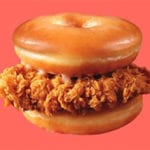 Technology
Technology  Technology
Technology  Humans
Humans 10 Everyday Human Behaviors That Are Actually Survival Instincts
 Animals
Animals 10 Animals That Humiliated and Harmed Historical Leaders
 History
History 10 Most Influential Protests in Modern History
 Creepy
Creepy 10 More Representations of Death from Myth, Legend, and Folktale
 Technology
Technology 10 Scientific Breakthroughs of 2025 That’ll Change Everything
 Our World
Our World 10 Ways Icelandic Culture Makes Other Countries Look Boring
 Misconceptions
Misconceptions 10 Common Misconceptions About the Victorian Era
 Mysteries
Mysteries 10 Strange Unexplained Mysteries of 2025
 Miscellaneous
Miscellaneous 10 of History’s Most Bell-Ringing Finishing Moves
 Technology
Technology Top 10 Everyday Tech Buzzwords That Hide a Darker Past
 Humans
Humans 10 Everyday Human Behaviors That Are Actually Survival Instincts
 Animals
Animals 10 Animals That Humiliated and Harmed Historical Leaders
Who's Behind Listverse?

Jamie Frater
Head Editor
Jamie founded Listverse due to an insatiable desire to share fascinating, obscure, and bizarre facts. He has been a guest speaker on numerous national radio and television stations and is a five time published author.
More About Us History
History 10 Most Influential Protests in Modern History
 Creepy
Creepy 10 More Representations of Death from Myth, Legend, and Folktale
 Technology
Technology 10 Scientific Breakthroughs of 2025 That’ll Change Everything
 Our World
Our World 10 Ways Icelandic Culture Makes Other Countries Look Boring
 Misconceptions
Misconceptions 10 Common Misconceptions About the Victorian Era
 Mysteries
Mysteries 10 Strange Unexplained Mysteries of 2025
 Miscellaneous
Miscellaneous 10 of History’s Most Bell-Ringing Finishing Moves
10 Ridiculous Food Scares That Had Us Completely Fooled
Eating is an essential part of human life, and eating stuff that won’t poison us or damage our bodies is one of the surest ways to keep ourselves in a state of long-term good health. For this reason, humans have always been fairly careful about how their food is handled. Even before we knew everything we do about hygiene, we certainly knew a good bit about cooking and preserving our grub.
However, with the advent of the modern food system and the global need to bring safe food to all corners of the globe, many new ingredients have been used to keep our food safe for eating. The fact that people don’t have quite as much knowledge of the origins of their food anymore has caused many to become increasingly worried about what they are eating, and that’s made it increasingly easy for people to be fooled by fake food scares.
10The Dangers Of High-Fructose Corn Syrup

Many people you talk to will claim that high-fructose corn syrup (HFCS) is the greatest demon of the food industry. In fact, some people go so far as to suggest that HFCS is responsible for the rise of diabetes and obesity in our country. They also claim that HFCS affects your body differently than regular sugar and that it is basically ruining the health of our country.
However, after multiple different studies, the verdict is that there is no evidence whatsoever that it is more dangerous for you than regular sugar, or that it even affects you differently in any way, shape, or form. A study specifically designed to see if it could correlate with the rise of obesity also recently came up empty.
While scientifically there is no evidence that it’s more dangerous than regular sugar, some researchers do believe that it could potentially be leading to a less healthy nation overall. Decades ago, regular sugar became more expensive, and HFCS stepped in to save the day and sate the nation’s sweet tooth. People who indirectly blame HFCS believe that it was so much cheaper that we saw an overall rise in sugar in general in products, which helped contribute to the obesity epidemic.
However, whether this theory is true or not, what health experts recommend if you wish to cut back on your sugar intake is not to just remove HFCS from your diet, but to watch your entire overall sugar consumption carefully. All sugar will affect you and should be eaten with moderation.
9Subway Is Putting Yoga Mat Chemicals In Their Sandwiches
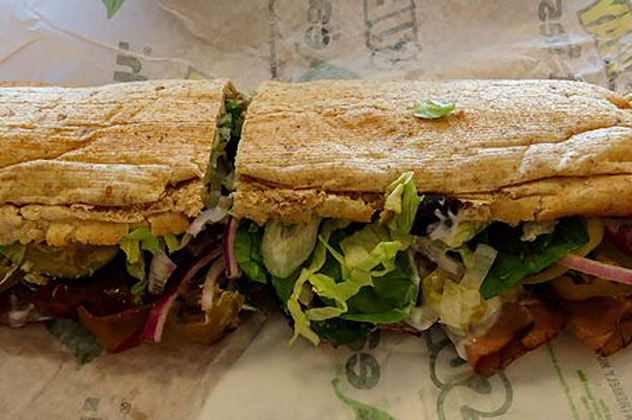
Not long ago, social media was ablaze with accusations that Subway’s bread contained a chemical commonly used for making yoga mats. Many people fell for this nonsense, and before long, Subway and other food producers were removing azodicarbonamide from their products in order to placate all of the angry bloggers shouting at them. However, it turns out that the entire scare was started by the blogger Vani Hari, also known as Food Babe. This is a woman who has made a business out of telling people that anything she can’t personally pronounce in an ingredient list is dangerous. She then starts angry petitions and puts the chemical on her banned list for her followers to read. This is quite a business, too. Hari sells products on her website (many of them containing ingredients she’s denounced), all while calling anyone who denounces her a shill for Big Food.
It turns out that azodicarbonamide is a safe baking additive that is used in incredibly tiny concentrations in dozens of baked products that you still find in stores everywhere. It was approved by the FDA in very small doses (45 ppm). Hari claimed that this additive can cause respiratory problems, but the only reports of this involved people who worked in the factories and inhaled the dust all day. Inhaling the dust of almost anything all day is bad for your respiration.
Some industry experts have also pointed out that products commonly used in industrial processes cross over into food production all the time. For example, an ingredient used to make tofu is often used in the creation of drywall. This may sound scary, but the finished product of tofu has about as much in common with drywall as Subway bread has with yoga mats.
8The Gluten Intolerance Fad Diet Train
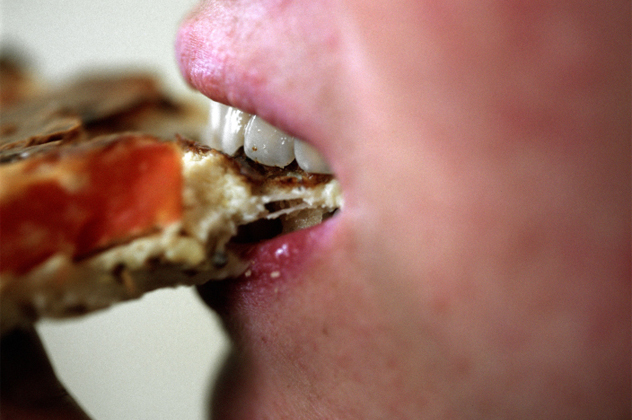
Celiac disease has only recently received a lot of attention, and it still often goes undiagnosed for years. For those who do realize they have this rare disease, the only way to prevent suffering is to avoid gluten-containing products altogether. Unfortunately, due to the rapid spread of information on social media, many people in recent years have started to come to the conclusion that gluten is bad for them even if they don’t have celiac disease. This has led to a rash of people who say that they have “non-celiac gluten intolerance,” and so they try to avoid it for their own health, despite not actually needing to.
This has caused many more restaurants to stock up on gluten-free products, which can be nice for people who actually suffer from the disease, but probably annoying for waitstaff who have to continually hear gluten-free questions from customers who have jumped on the latest fad. Studies on whether there is anything to the non-celiac intolerance of gluten have been done, and the results show no evidence at all that gluten is bad for anyone who doesn’t have the disease.
In fact, studies showed that there is another ingredient common in most gluten-containing products called fermentable, poorly absorbed, short-chain carbohydrates—FODMAPs for short—that are likely the real culprit. Testing showed that if the food didn’t contain FODMAPs, there was no health difference between the gluten and non-gluten diet. As of yet, there is still no evidence that suggests gluten is bad for non-celiac sufferers.
7Eating Too Much Soy Can Increase Estrogen Levels In Men

Soy is a popular food for vegans and people who are trying to find an alternative source for protein aside from dairy and meat. It has also become something of a hipster food, and in some circles it has gained an unfortunate status as a “woman’s food.” The rumor has been making its way around for several years now and essentially claims that eating soy can greatly raise your estrogen levels and decrease your testosterone. If you look around the web, you’ll find bodybuilders on forums discussing their worries of using soy because of the womanly effects it might have on their manly bodies, and some people believe that it can definitely cause a serious hormonal change for men. This has caused some men to swear off soy completely to ensure that they don’t decrease their precious testosterone.
However, despite the claims that have been floating around for a while now, there is no real evidence to back any of them up. Multiple tests have found no reason to believe that eating soy will seriously mess with a man’s hormone levels. The only outlier is an odd case where an older man with multiple health issues was found to have a few noticeable effects, but he was drinking three entire quarts of soy a day. As you might imagine, this is far more than even the most die-hard soy fanatics usually consume—and that much of any particular product a day is typically not good for you. Balance and moderation are the key to healthy diets, and even if you eat an above-average amount of soy, there is no reason to believe it will have any serious effects, according to the studies. The bottom line with soy is that no reasonable consumption of soy is likely to have any serious or lasting effect on male hormone levels.
6The Recent Spate Of People With Lactose Intolerance

We should be clear here first that there are people who are truly lactose intolerant to a fairly serious degree—just a few ounces of milk can quickly give them some serious digestive issues. And, of course, milk allergies are a different thing entirely. But in recent years, lactose intolerance has become a popular catchall cause for digestive problems for a lot of people, and this fad is giving doctors headaches. To begin with, many of them feel that people are not only exaggerating how much indigestion is actually caused by it, but also ignoring many other possible factors that could be causing the indigestion, simply because lactose intolerance is the popular thing to blame.
In order to test this theory, a group of study volunteers were given a glass of milk a day for a week. The researchers put lactase in this milk to ensure it would break down, preventing discomfort even in those who would normally have a real issue. The second week, they stopped putting the lactase in the milk, but didn’t tell the study volunteers. They also messed with the milk to make sure it tasted the same. The test subjects reported the same levels of indigestion for both milks, confirming the researchers’ theory that for a lot of people, lactose intolerance is actually just in their heads.
Doctors are also worried that people will end up missing a lot of important nutrients by trying to remove dairy from their diet. They caution that most people with even fairly strong lactose intolerance can still have a moderate amount with a meal and be fine. They also want to remind people that it is not a disease or a serious, life-threatening condition—it’s just indigestion.
5The Atkins Diet And Why You Actually Need Carbohydrates

Some years back, the Atkins diet took off in popularity like a runaway freight train, and a lot of diets were quickly derailed. The diet essentially suggested cutting back on carbs and focusing more on eating fats and proteins. The idea behind it was that carbs are normally what your body goes to first for energy, but if it’s starved of carbs, it will actually eat away fat first and you will get the weight loss you so desperately crave. Apart from the fact that, like most diet plans, you run the risk of yo-yoing if you don’t keep it up forever, there were also a lot of dangerous implications from the low-carb diet fad.
The thing is, our body actually needs carbohydrates pretty badly, and while replacing the processed carbohydrates in your diet with more natural ones is certainly a good idea, removing them almost entirely is definitely not so smart. Carbohydrates, as we mentioned earlier, are the first thing your body burns for energy. Restricting your body’s access to them can actually hinder workouts and even lead to muscle loss, as a low-carb diet can lead to you burning your protein and muscle mass instead of carbs.
To make matters worse, people who went on low-carb diets were found to have trouble on memory tasks, because carbohydrates also help your brain function at an optimal level. Studies have also found that people who went on low-carb diets were more irritable overall, likely because carbohydrates are also linked to releasing feel-good chemicals in your body. While it is true that processed carbohydrates have things in them that aren’t great for you, the fact of the matter is that low-carb diets are even worse for you. The best of both worlds is to eat plenty of carbohydrates, but get them from safe, natural sources like fresh vegetables.
4Scary, Unpronounceable Chemicals In Our Food
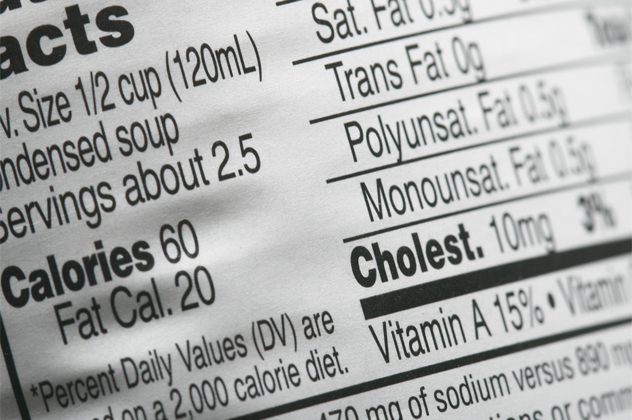
Many people today read the labels for their food and see long chemicals that they can barely pronounce as adults, and they get a little bit concerned. Most people either just let it go and buy the food anyway, deciding it isn’t that important to them, or they go online and look up the ingredient to see why it’s there. Unfortunately, there has been a recent trend of busy people deciding that if they don’t understand an ingredient, they’ll go to random bloggers for advice. As a result, we’ve started avoiding certain foods or chemicals for all the wrong reasons.
The Food Babe blogger we talked about earlier has a rule for her cult-like followers that amounts to this: If a small child cannot pronounce an ingredient, you shouldn’t eat it. This is, of course, a completely ridiculous rule to live by. Plenty of poisonous ingredients, such as arsenic, are relatively easy to pronounce, while a tongue twister like azodicarbonamide is certainly a whole lot safer. But what’s really scary is the amount of people who are willing to be willfully ignorant about what is actually in their food.
3The Frightening Acidic Powers Of Coca-Cola
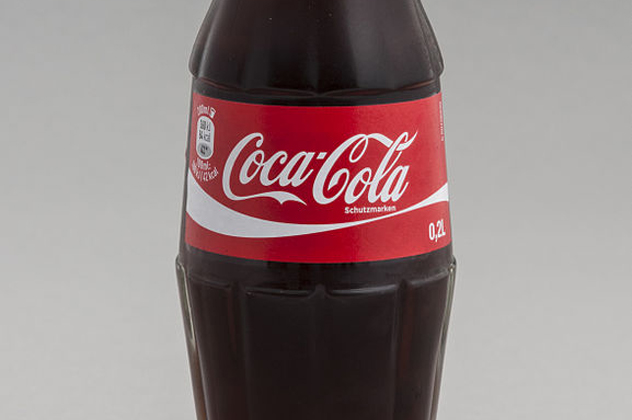
The dissolving powers of Coca-Cola have been thrown wildly around the Internet for years with a rather reckless degree of irresponsibility. People wantonly claim that Coke can dissolve metal nails and T-bone steaks, is suitable for cleaning car engines, is extremely dangerous to your stomach, and is so acidic that Coca-Cola truck drivers have to have special permits for carrying corrosive materials. While it would be amazing to have a cheap, household product that is so readily capable of all those things, the fact of the matter is that they are simply not true. To begin with, even if these claims were true, they would basically apply to all sodas. All sodas have carbonic acid, and you would be hard-pressed to find a modern soda that doesn’t contain citric acid as well.
Carbonic acid itself is hardly that acidic, and while citric acid is fairly more so, there is more citric acid found in a typical glass of orange juice than there is in a can of Coke. In other words, if the claims were true, they would apply equally to a glass of OJ. And according to Snopes, the acids in your stomach are far stronger than anything in Coca-Cola, so you really don’t have to worry about it dissolving your insides. Of course, this still doesn’t mean that soda is good for you, but in moderation it isn’t going to kill you.
2The Lurking Danger Of Wood Pulp In Our Food
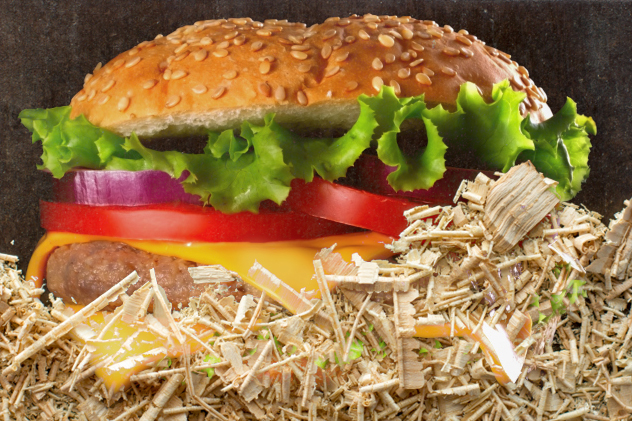
Not long ago, the media went on a food panic about the dangers of cellulose in our food. In order to mislead people as best as possible, they referred to it as “wood pulp.” While that’s essentially true, it gives people a rather inaccurate picture of what they are actually eating. Some of these hysterical postings slyly made it sound like they were suggesting that cellulose could have something to do with obesity, and despite making it sound dangerous, couldn’t mention any real dangers besides the fact that it has no nutritional value.
The reason, of course, is because there is no danger from cellulose at all. While it is referred to by panic mongers as “wood pulp,” it’s something that’s found in the cell walls of all plants and is basically pure fiber. It goes right through you and won’t give you any calories or nutrients, but it is not at all dangerous for you—in fact, you’ll find cellulose naturally in any fruit or vegetable.
Some people also tend to think of it at least as an evil filler ingredient, meant to make you think you’re getting more food than you actually are, but that’s not really the case either. Food items label the calorie count, and since cellulose doesn’t provide calories, there’s no way it can inflate the count and make you think you are getting more nutrition than you are. In food production, it’s basically just used to thicken foods and help them mix better.
1Doritos And Other Chips Are Scary Because They Double As Kindling
Doritos are the quintessential chip of teenagers and stoners everywhere. Despite their popularity, they are also not known for being very good for you, and most people would place them firmly in the “junk food” category. However, sometimes you hear something about a particular food and it gives you even more pause than usual. On YouTube, people have made a trend of showing how you can set fire to a Dorito and it will very slowly burn. For many people, this is a dramatic demonstration of just how bad this food is for you.
Now, these fire videos are actually useful in that they show how Doritos would make fine kindling if you were ever out in the wilderness, but there is no reason at all to think it makes them extra bad for you. As Lifehacker explains, Doritos and other similar chips like Frito’s and Cheetos (which all work just as well or better), are basically just hydrocarbons soaked in fat and then dried. In other words, you could hardly ask for a better way to start a fire, but there is nothing especially dangerous going on in your corn chips.
